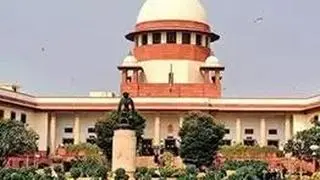In January 2015, when Prime Minister Narendra Modi dedicated to the nation its first “digital village”, Akodara in Sabarkantha district of Gujarat, few would have realised what it would mean to its nearly 1,100 locals: a virtually cashless economy free from everyday currency hassles, currently being experienced by millions queuing up at banks across the country.
Akodara, located some 90 km from Ahmedabad, has been adopted and developed by the ICICI Foundation as a digitised village with a rural branch of the bank. It is a rare example of a largely cashless economy: most transactions between Rs 10 and Rs 5,000 are done via SMS. The payment goes directly into the shopkeeper’s bank account as the buyer and seller are both connected through their accounts in the same bank.
In less than 18 months, most people of Akodara have chosen to go virtually cashless using this technology. The village even boasts of its own website: http://akodara-digitalvillage.in and its wi-fi with high speed broadband connectivity has some 50 subscribers across 200-odd households. The gram panchayat has rented out a premises to ICICI Bank’s rural branch. The wi-fi facility also enables farmers to access the latest price of agricultural commodities on NCDEX, with the bank acting as a hub for business activity.
No wonder a Haryana delegation of nearly 30 sarpanches, led by Ambala City MLA Aseem Goel Naneola, visited Akodara recently to study how this cashless village goes about its daily business.
“You can see for yourself. Our customers come here mainly to deposit or exchange demonetised notes of Rs 1,000 and Rs 500 denominations. They don’t usually draw money even from our ATM as they all carry e-wallets in their smartphones,” Prateek Panchal, Manager, and his deputy Brajesh Kumar, told BusinessLine .
According to Taraben Patel, sarpanch, while most youths use the convenient SMS way for payments, some elderly people still use cash. An account with ICICI Bank is mandatory for this SMS-based banking system.
The people need cash mainly to transact business outside their digital village. “In all, we have nearly 1,200 savings accounts in Akodara and the adjoining village of Chhadarda. It is mainly the residents of Chhadarda who draw money from the ICICI ATM. The village has six shops that cumulatively record nearly 500 transactions daily. Around 600 people have so far been imparted financial literacy training.”
ICICI Bank has developed a dedicated and customised SMS banking platform and software for the village to enable users to do four basic banking transactions in English and Gujarati — balance enquiry, mini-statement, fund transfer and prepaid mobile phone charges. A customer only needs to send an SMS in a simplified format to initiate a transaction and he receives a completion response likewise.
The bank has also developed a micro-ATM-based solution to facilitate the local mandi commission agents to make payments to farmers for their produce. Himmatnagar, 13 km from Akodara, is the first mandi in Gujarat to go cashless with this transaction facility. The three micro-ATMs are used for payment of services such as drinking water from a reverse-osmosis plant set up by ICICI Bank or for payments made for purchase of goods. The villagers can also avail of banking services with Unstructured Supplementary Services Data (USSD) on the National USSD Platform (NUUP) with their registered mobile numbers.
Most people of Akodara are generally prosperous, boasting pucca houses, good crops of cotton, castor and wheat, milk production, and their own vehicles. It even has probably the world’s first “hostel” for cattle, started by Modi when he was the Chief Minister of Gujarat. With technology acting as a catalyst for development, ICICI Bank has set up facilities in financial services, education and healthcare within the village. Many local financial transactions happen through mobile banking, debit cards and Internet banking.
Even anganwadis and schools impart education to children through integrated projector-cum-computers with smart board interactive features. Teaching involves use of tablets and computers with audio-visual content mapped to the classroom curriculum. Schools have also been provided management software for academic and administrative tasks. And villagers have access to medical advice through e-health centres. Medical diagnosis happens in the centre and, using tele-medicine tools, it is transmitted to experts for advice.








Comments
Comments have to be in English, and in full sentences. They cannot be abusive or personal. Please abide by our community guidelines for posting your comments.
We have migrated to a new commenting platform. If you are already a registered user of TheHindu Businessline and logged in, you may continue to engage with our articles. If you do not have an account please register and login to post comments. Users can access their older comments by logging into their accounts on Vuukle.